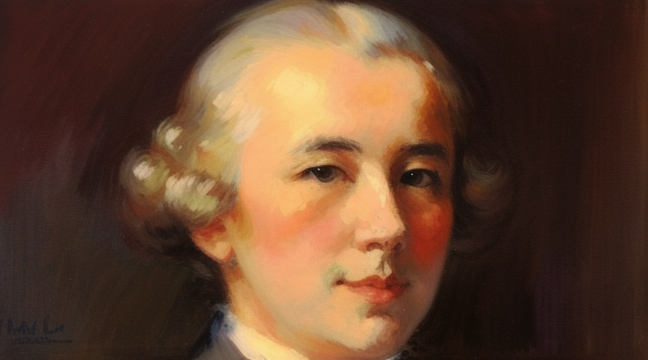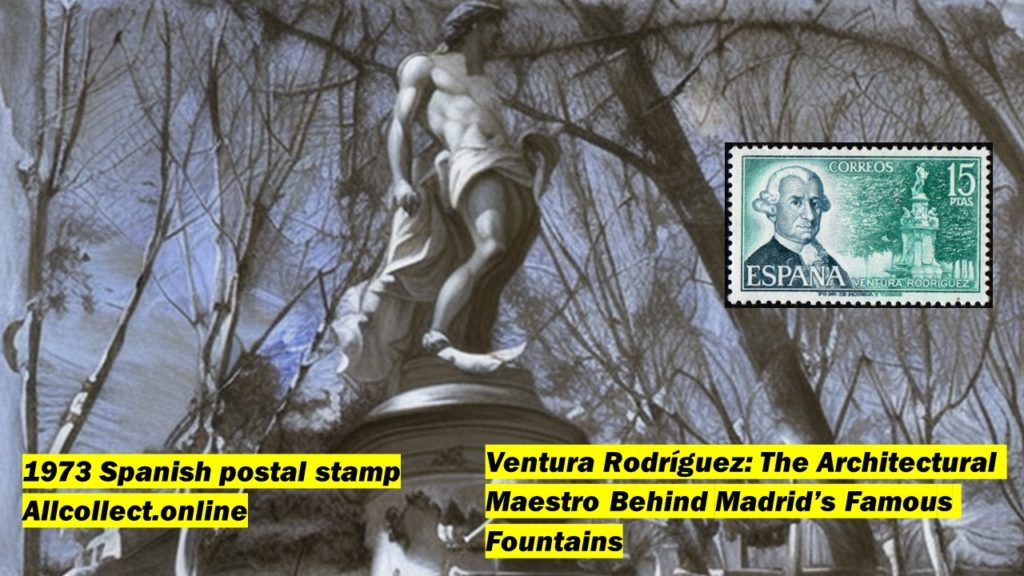
Ventura Rodríguez (1717–1785), one of Spain’s most distinguished architects, played an instrumental role in shaping the architectural landscape of 18th-century Spain. His works, emblematic of the transition from the Baroque to the Neoclassical periods, can be observed in various edifices and public spaces, with a significant number in the heart of Madrid.
Born in Ciempozuelos, Madrid, on July 14, 1717, Rodríguez’s journey into the realm of architecture began under the tutelage of his uncle, Manuel Rodríguez, a master builder of his time. Further honing his craft, he trained with José de Hermosilla, which set him on a trajectory to become one of Spain’s most sought-after architects.

Rodríguez’s architectural prowess is distinctly evident in his contributions to Madrid’s urban aesthetic. One of his most iconic works is the Apollo Fountain, also known as the “Fuente de Apolo” or “Fuente de las Cuatro Estaciones” (Fountain of the Four Seasons). Situated on the Paseo del Prado, this fountain forms a trilogy with two other magnificent fountains — the Fountain of Neptune and the Fountain of Cybele. Commissioned as part of the city’s beautification during King Charles III’s reign, these fountains remain emblematic of Madrid’s rich cultural and historical tapestry.
The Apollo Fountain, constructed between 1777 and 1803, stands as a celebration of Apollo, the Greek god of the sun, music, and arts. Adorned with a radiant crown symbolizing the sun, Apollo is surrounded by figures representing the Four Seasons. The harmony between architectural design and sculpture in this fountain is a testament to Rodríguez’s unparalleled skill and vision.
Beyond fountains, Rodríguez’s architectural brilliance is showcased in various structures across Spain. Some of his standout works include the Chapel of the Virgin of Pilar in Zaragoza, the Royal Monastery of San Clemente in Toledo, and the redesign of the Liria Palace in Madrid post a damaging fire.
However, his association with water features, particularly the Apollo Fountain, underscores his unique ability to breathe life into public spaces. Through his designs, Rodríguez did not merely create structures; he curated experiences, drawing residents and tourists alike to engage with the cultural heart of the city.
Ventura Rodríguez’s legacy in Spanish architecture is undeniably profound. As a frontrunner in introducing and establishing the Neoclassical style in Spain, he set new benchmarks in architectural excellence. His works, a blend of aesthetic allure and innovative design, continue to enchant visitors, standing as timeless reminders of Spain’s rich architectural history.
Sadly, on February 13, 1785, the world lost this architectural gem. Yet, through the streets of Madrid and the corridors of Spain’s historic structures, Ventura Rodríguez’s spirit lives on, echoing the tales of an era where stone, water, and creativity converged to sculpt history.

